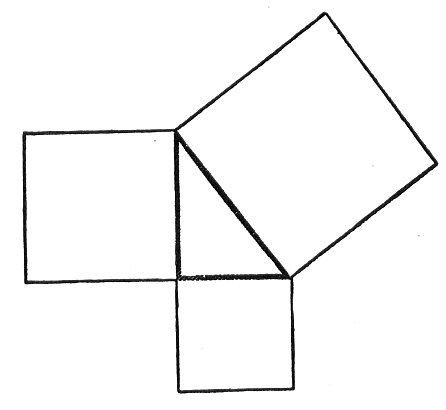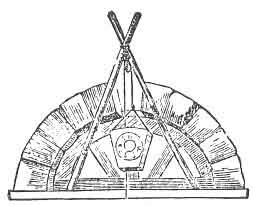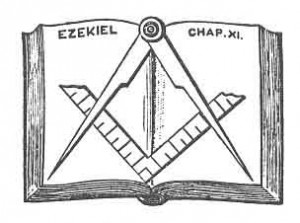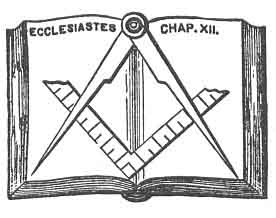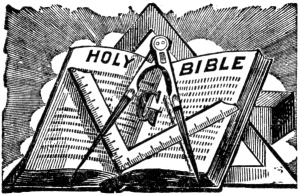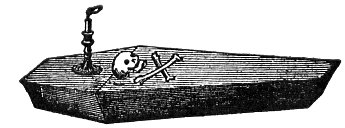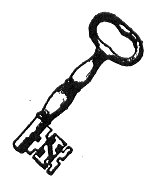We know, through a precise testimony in the ancient annals of Tsu_r, that the principal festivity of Mal-karth, the incarnation of the Sun at the Winter Solstice, held at Tsu_r, was called his rebirth or his awakening, and that it was celebrated by means of a pyre, on which the god was supposed to regain, through the aid of fire, a new life. This festival was celebrated in the month Peritius (Barith), the second day of which corresponded to the 25th of December. KHUR-UM, King of Tyre, Movers says, first performed
p. 79
this ceremony. These facts we learn from Josephus, Servius on the Æneid, and the Dionysiacs of Nonnus; and through a coincidence that cannot be fortuitous, the same day was at Rome the Dies Natalis Solis Invicti, the festal day of the invincible Sun. Under this title, HERCULES, HAR-acles, was worshipped at Tsu_r. Thus, while the temple was being erected, the death and resurrection of a Sun-God was annually represented at Tsu_r, by Solomon’s ally, at the winter solstice, by the pyre of MAL-KARTH, the Tsu_rian Haracles.
AROERIS or HAR-oeris, the elder HORUS, is from the same old root that in the Hebrew has the form Au_r, or, with the definite article prefixed, Hau_r, Light, or the Light, splendor, flame, the Sun and. his rays. The hieroglyphic of the younger HORUS was the point in a circle; of the Elder, a pair of eyes; and the festival of the thirtieth day of the month Epiphi, when the sun and moon were supposed to be in the same right line with the earth, was called “The birth-day of the eyes of Horus.”
In a papyrus published by Champollion, this god is styled “Haroeri, Lord of the Solar Spirits, the beneficent eye of the Sun.” Plutarch calls him “Har-pocrates;” but there is no trace of the latter part of the name in the hieroglyphic legends. He is the son of OSIRIS and Isis; and is represented sitting on a throne supported by lions; the same word, in Egyptian, meaning Lion and Sun. So Solomon made a great throne of ivory, plated with gold, with six steps, at each arm of which was a lion, and one on each side to each step, making seven on each side.
Again, the Hebrew word ו ?X?Y, Khi, means “living;” and ו ?R?Aמ, râm “was, or shall be, raised or lifted up.” The latter is the same as ו ?R?Wמ, ו ?A?R?Wמ, ו ?X?Rמ ro_o_m, aro_o_m, haru_m, whence Aram, for Syria, or Aramæa, High-land. Khairu_m, therefore, would mean “was raised up to life, or living.”
So, in Arabic, hrm, an unused root, meant, “was high,” “made great,” “exalted;” and Hîrm means an ox, the symbol of the Sun in Taurus, at the Vernal Equinox.
KHURUM, therefore, improperly called Hiram, is KHUR-OM, the same as Her-ra, Her-mes, and Her-acles, the “Heracles Tyrius Invictus,” the personification of Light and the Son, the Mediator, Redeemer, and Saviour. From the Egyptian word Ra came the Coptic Ou_ro, and the Hebrew Au_r, Light. Har-oeri, is Hor or Har, the chief or master. Hor is also heat; and hora, season or
p. 80
hour; and hence in several African dialects, as names of the Sun, Airo, Ayero, eer, uiro, ghurrah, and the like. The royal name rendered Pharaoh, was PHRA, that is, Pai-ra, the Sun.
The legend of the contest between Hor-ra and Set, or Set-nu-bi, the same as Bar or Bal, is older than that of the strife between Osiris and Typhon; as old, at least, as the nineteenth dynasty. It is called in the Book of the Dead, “The day of the battle between Horus and Set.” The later myth connects itself with Phœnicia and Syria. The body of OSIRIS went ashore at Gebal or Byblos, sixty miles above Tsu_r. You will not fail to notice that in the name of each murderer of Khu_ru_m, that of the Evil God Bal is found.
* * * * * * Har-oeri was the god of TIME, as well as of Life. The Egyptian legend was that the King of Byblos cut down the tamarisk-tree containing the body of OSIRIS, and made of it a column for his palace. Isis, employed in the palace, obtained possession of the column, took the body out of it, and carried it away. Apuleius describes her as “a beautiful female, over whose divine neck her long thick hair hung in graceful ringlets;” and in the procession female attendants, with ivory combs, seemed to dress and ornament the royal hair of the goddess. The palm-tree, and the lamp in the shape of a boat, appeared in the procession. If the symbol we are speaking of is not a mere modern invention, it is to these things it alludes.
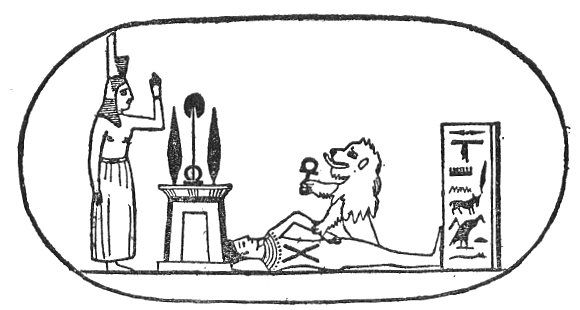 The identity of the legends is also confirmed by this hieroglyphic picture, copied from an ancient Egyptian monument, which may also enlighten you as to the Lion’s grip and the Master’s gavel.
The identity of the legends is also confirmed by this hieroglyphic picture, copied from an ancient Egyptian monument, which may also enlighten you as to the Lion’s grip and the Master’s gavel.

Moe is the founder of GnosticWarrior.com. He is a father, husband, author, martial arts black belt, and an expert in Gnosticism, the occult, and esotericism.

